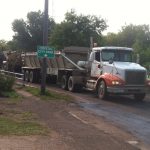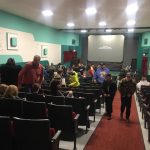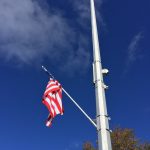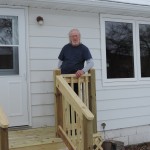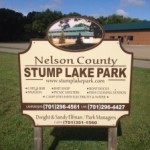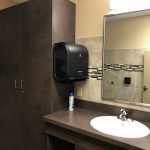HOW TO APPLY
Starting with the FY2022 program year, applicants will be submitting pre-applications directly to the ND Department of Commerce-Division of Community Services.
The Pre-Application period is open until August 1, 2022. You can find the application and information on how to apply here:
https://www.commerce.nd.gov/community-services/community-development/community-development-block-grant-cdbg
It is expected there will be approximately $205,000 available for projects in Region 4.
Community Development Block Grant Program
The Community Development Block Grant Program (CDBG) provides funding for public facilities, housing, and economic development projects in Region IV, which includes Grand Forks, Nelson, Pembina and Walsh counties. Each year, approximately $205,000 is allocated to projects in Region IV.
WHAT IS CDBG?
The Community Development Block Grant (CDBG) was established by Congress in 1974 and is administered by the U.S. Department of Housing and Urban Development (HUD). The North Dakota Department of Commerce – Division of Community Services administers the CDBG program for the state with funding recommendations developed by the eight regional councils. The Red River Regional Council (RRRC) makes recommendations for Region IV, which includes Grand Forks, Nelson, Pembina and Walsh counties.
As defined by HUD, the primary purpose of CDBG is “the development of viable communities, by providing decent housing and suitable living environment and expanding economic opportunities, principally for persons of low and moderate income.”
DEFINING LOW & MODERATE INCOME
Low and moderate income (LMI) households are those that are up to 80% of the median household income based on household size. Data is derived from the 2010 U.S. Census and differentiates by household size and is defined as all persons living in a single household. Income of anyone age 18 or older is included in the total.
Contact RRRC staff for current income eligibility thresholds.
MEETING A NATIONAL OBJECTIVE
In order to be eligible for CDBG funds, a project or activity must meet at least one of the national objectives:
Activities benefiting low and moderate-income persons:
- The benefits are available to all the residents in a particular area, where at least 51% of the residents are LMI.
- Where the assistance is to a public improvement that provides benefits to all the residents of an area that is limited to paying special assessments levied against residential properties owned and occupied by LMI persons.
- Any cities or counties having 51% or more of households meeting these criteria meet the definition of an LMI community. Please review the LMI chart for a complete list of Region IV communities and LMI percentages:
Region IV LMI stat chart
- In a community with 51% or more LMI residents, CDBG funds can be used for construction costs on public facilities projects. If the community is under 51% LMI, CDBG funds can only be used to pay the special assessments of the LMI provided the total LMI assessments do not exceed available CDBG funds.
Limited clientele activities:
Limited clientele is defined as abused children, battered spouses, elderly, handicapped, homeless or illiterate persons, and migrant farm workers:
- An activity which benefits a limited clientele, at least 51% of whom are LMI.
- Project directed to removal of material and architectural barriers (ADA accessibility) in publicly owned and privately-owned non-residential buildings and facilities.
Housing:
An activity carried out for the primary purpose of providing or improving permanent residential structures which will be occupied by LMI households.
Job creation & retention:
- Create permanent jobs were at least 51% of which involve the employment of LMI persons.
- For job retention, the city or county must document the job would be lost without CDBG assistance and the job is known to be held by a LMI person; and/or the job can reasonably be expected to turn over within the following 2 years and will be filled by, or steps will be taken to ensure it is available to, an LMI person.
Prevention/elimination of slum or blight:
- Resulting area must remain perpetual greenspace or if new construction the end result must meet a national objective.
POSSIBLE PROJECTS
The following chart shows a sample of North Dakota projects recently awarded public facility CDBG dollars between 2012-2018:
CDBG PF Projects 2012-2018
Region IV communities have been awarded CDBG funds for a variety of projects such as:
- Public infrastructure projects including: lagoon improvements, sanitary sewer lift station, reconstruction of street lights, replacement of fire hydrants, citywide street paving, city sidewalk replacement, fire hall construction, etc.
- Housing rehabilitation, conversion, construction
- Removal of architectural barriers (handicap accessibility). Recent projects in the region include the Walla Theater in Walhalla, Nelson County Health System hospital and long-term care facility, Fordville Senior Citizens Club, Pembina County Meals and Transportation Center, and sidewalks in the City of Manvel.
- Economic development: Part of the North Dakota Community Development Loan Fund (CDLF), which targets both primary and retail sector businesses and job creation/retention for LMI. Used for new business gap financing, business purchase, equipment, working capital and infrastructure. Recent economic development projects funded in our region include: extension of water and sewer infrastructure to support the construction of a new business; and business purchase as well as heating, cooling and roofing updates in the building.
APPLICATION PROCESS
Interested applicants must complete a two-step application process, which starting with the FY2022 program year will be managed by the state’s Department of Commerce – Community Services Division.
No work on the project, even portions not funded with CDBG, can begin prior to grant award from the state. Applicants should apply for CDBG the year PRIOR to the year the project will be implemented. For example, if awarded FY2022 funds, the construction timeline for public facilities projects would likely be spring/summer of 2023.

